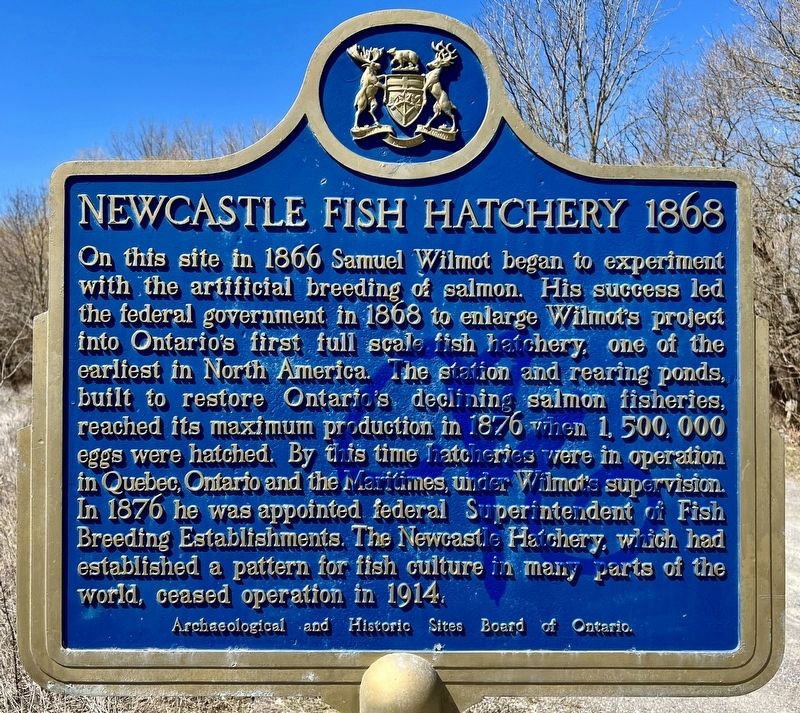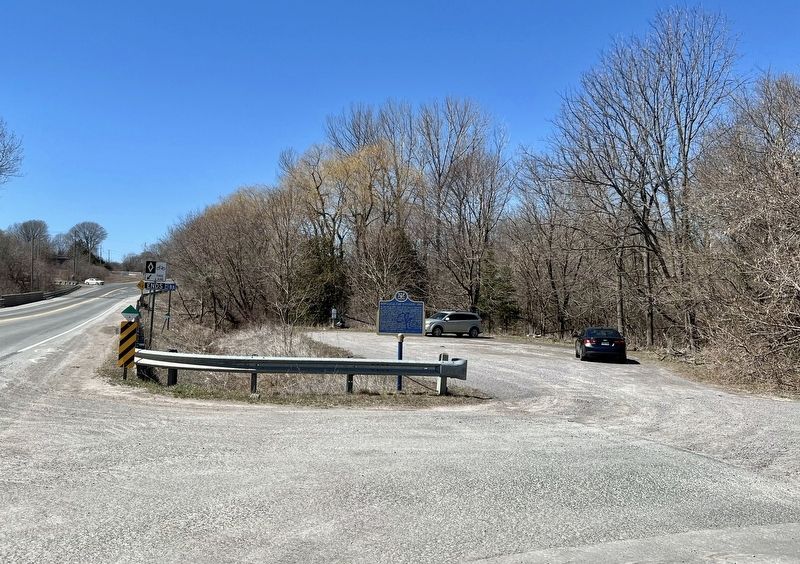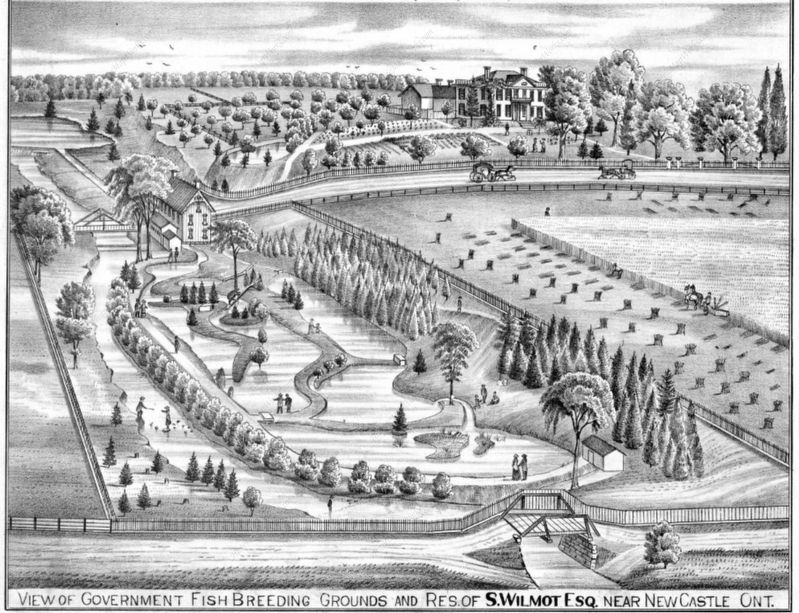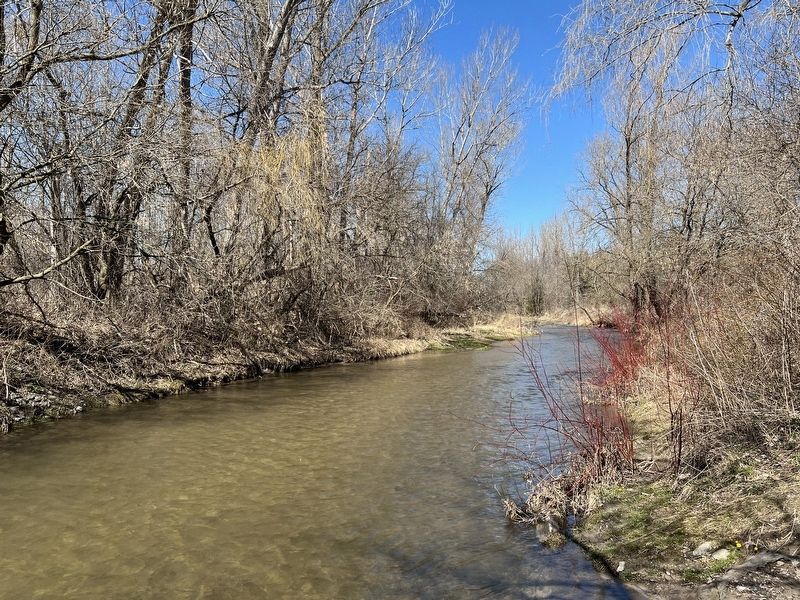Newcastle in Clarington in Durham Region, Ontario — Central Canada (North America)
Newcastle Fish Hatchery 1868
Archaeological and Historic Sites Board of Ontario.
Erected by Archaeological and Historic Sites Board of Ontario.
Topics and series. This historical marker is listed in these topic lists: Agriculture • Animals • Industry & Commerce. In addition, it is included in the Canada, Ontario Heritage Foundation series list. A significant historical year for this entry is 1868.
Location. 43° 54.777′ N, 78° 36.51′ W. Marker is in Clarington, Ontario, in Durham Region. It is in Newcastle. Marker is on Durham Regional Highway 2, 0.2 kilometers east of Cobbledick Road, on the right when traveling west. Touch for map. Marker is at or near this postal address: 2 Durham Regional Hwy 2, Clarington ON L1B L1B, Canada. Touch for directions.
Other nearby markers. At least 8 other markers are within 6 kilometers of this marker, measured as the crow flies. Bishop Charles Henry Brent 1862-1929 (approx. 1.7 kilometers away); Joseph E. Atkinson 1865-1948 (approx. 1.9 kilometers away); King Street, Circa 1900 (approx. 6.4 kilometers away); St. Andrew's Presbyterian Church (approx. 6.4 kilometers away); Church and Temperance Street, circa 1880 (approx. 6.4 kilometers away); Clarington Municipal Administration Centre (approx. 6.4 kilometers away); Market Square, Town Hall & Horsey Block, 1880. (approx. 6.4 kilometers away); Rathskamory Estate. Circa 1843 (approx. 6.4 kilometers away). Touch for a list and map of all markers in Clarington.
Also see . . . Samuel Wilmot Fish Hatchery Newcastle.
As his farm was on Wilmot Creek, a noted spawning stream for Lake Ontario Salmon, in the 1850’s he noted that the runs of salmon in the creek and other salmon streams on Lake Ontario had greatly depleted as a result of overfishing and changes in the environment. Wilmot became interested in the possibility of restocking the stream by means of artificial propagation. In the mid 1860’s, he built an experimental hatchery in his basement at ‘Belmont’ and with a large trough and spring water piped in to simulate actual stream conditions. With eggs procured from a local gravel spawning area he was ready for the test. Some of the eggs hatched.(Submitted on April 11, 2024, by Tim Boyd of Hamilton, Ontario.)
Credits. This page was last revised on April 14, 2024. It was originally submitted on April 11, 2024, by Tim Boyd of Hamilton, Ontario. This page has been viewed 38 times since then. Photos: 1, 2, 3, 4. submitted on April 11, 2024, by Tim Boyd of Hamilton, Ontario. • Andrew Ruppenstein was the editor who published this page.



